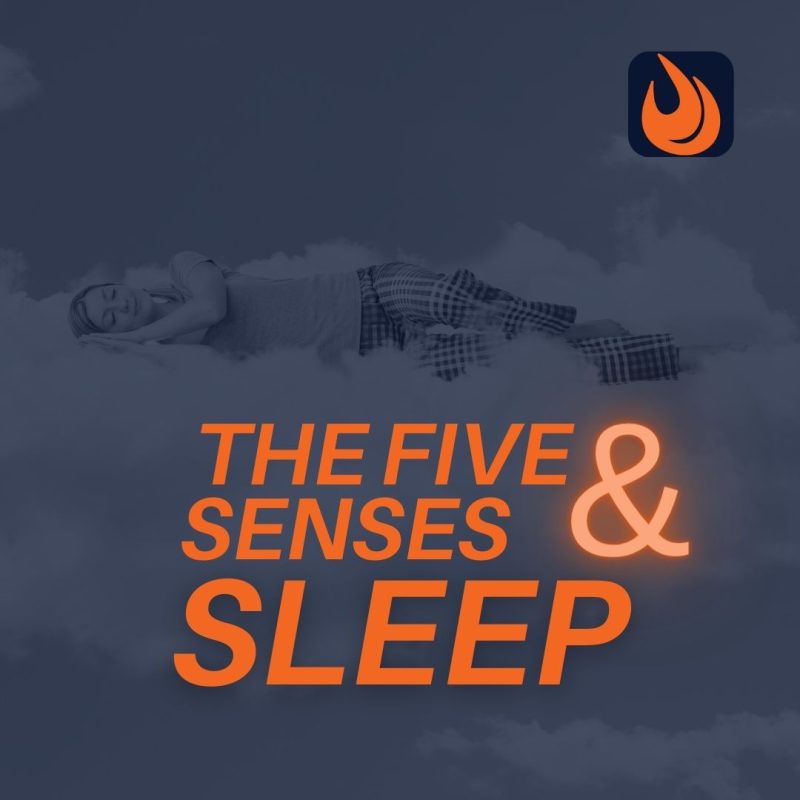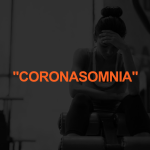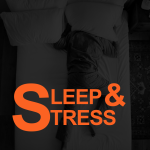
Bedtime routines are as powerful for sleep as morning workouts are for waking up, and the role of our five senses as human beings can be leveraged for better sleep.
Inertia builds after a busy day and can be tough to budge. Transitioning from one mode to another can feel more natural when we lean into science for guidance. Help your clients shift their bodies and minds into better health by suggesting an evening routine that addresses the impact of their five senses. This will help them get to bed earlier and fill up on the quality sleep they need to combat illness, regulate mood, and fuel energy, amongst a host of other benefits.
Use the information below on the five senses and how they relate to sleeping to get the conversation going.
The Five Senses of Sleep
Sight
Light exposure, or lack thereof, is a primary cue for the human body to be awake or asleep. Melatonin, our sleep hormone is released in sync with darkness, which in nature is consistent. Giving humans control over lights might have been the worst thing possible for our sleep, but with a little education, we can use that power to get the rest we are designed for! Dimming lights after dinner and turning off all screens at least one hour before bed helps mimic nature and support circadian rhythm. Red-colored night lights are a melatonin-friendly choice for nighttime bathroom trips. Turn people on to turning lights down and off early enough to get eight hours of sleep (some might need nine).
Hearing
Music chosen with intention can get us pumped up for a workout class and also settled down for bed. Relaxing music shifts the nervous system from sympathetic (alert) into parasympathetic (restful). Searching keywords in music apps such as: sleep, yoga, chakra, sound healing, nature, piano, and classical will produce many options for soothing sounds.
Taste
Sleep scientists and experts always recommend stopping eating three hours before bedtime. One way to encourage this is to brush teeth at least one hour before bedtime, maybe two. Also, consider toothpaste for a moment: minty flavors can be stimulating instead of relaxing, so try fennel or even consider whipping up a homemade version of toothpaste using baking soda, coconut oil, and a safe essential oil.
Smell
Smells go directly to the limbic system, which is where emotions and mood stem from. Lavender and chamomile are sedative scents and vanilla induce a drowsy feeling. Candles, lotion, or diffusing oil with a scent that brings the senses to stillness for sleep is another way to relax before bed.
Touch
Pajama and bedding considerations: literally add a layer for coaxing the system into sleep. Contemplate comfort and temperature. The body drops 1-2 degrees in temperature for sleep and benefits from a cooler environment. WebMD says most people reach deeper states of sleep within the 60-65 degree range environment and that sleeping naked helps keep skin temperature down, improving sleep quality. It is worth a try!
Tips to Address the Five Senses for Optimal Sleep
- Recommend your clients coax their senses and systems toward sleep one hour before bedtime to create a mood for slumber
- Start with one or two ideas from above and work up to all five senses
- Setting a bedtime alarm can be helpful to cue to start the sleep sequence
- Starting around the same time every night creates consistency around sleep timing improving sleep quality
Acknowledging the complexity of the human system through all five senses before bed is a simple way to improve health and wellness; the quality of our sleep affects everything we do when awake. If someone you work with is struggling with sleep, check out the NFPT Sleep Coach Course to deepen your sleep science knowledge and guide people according to their unique needs.







